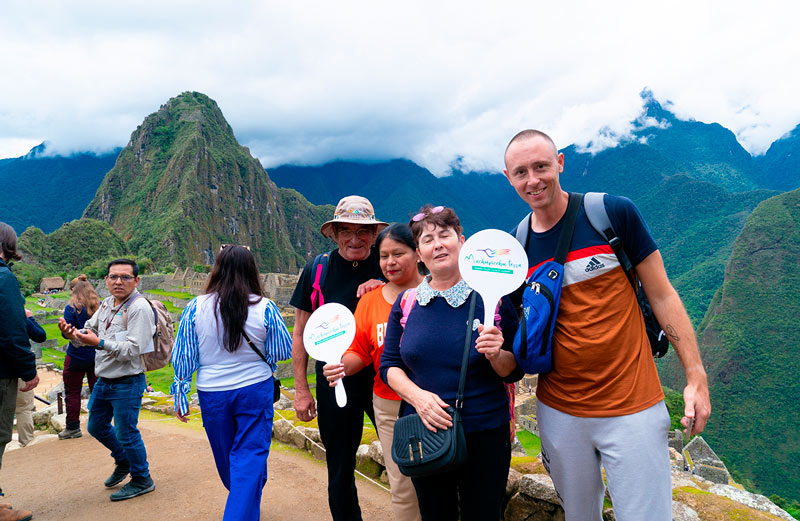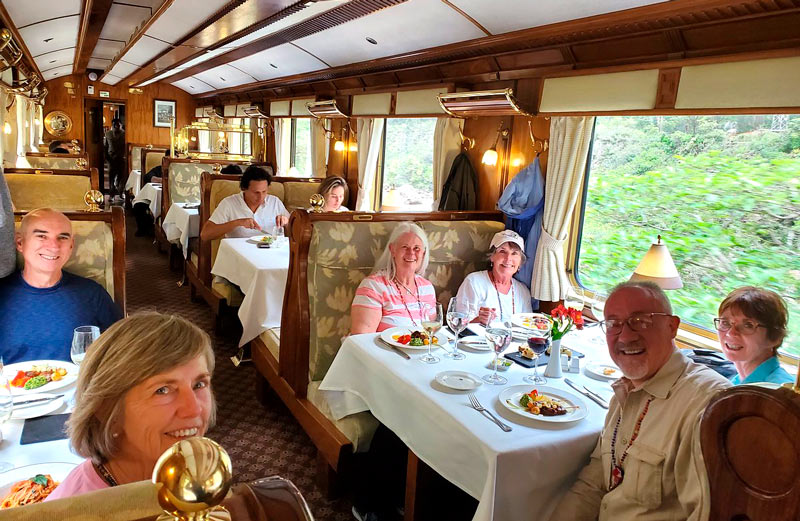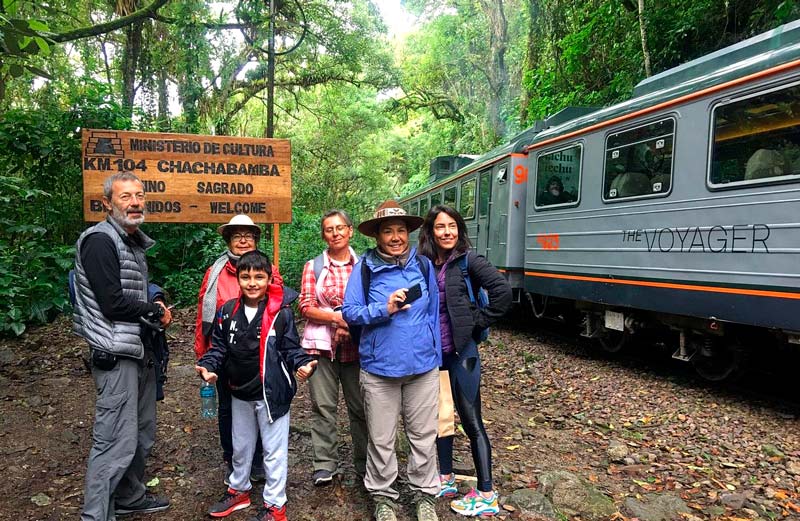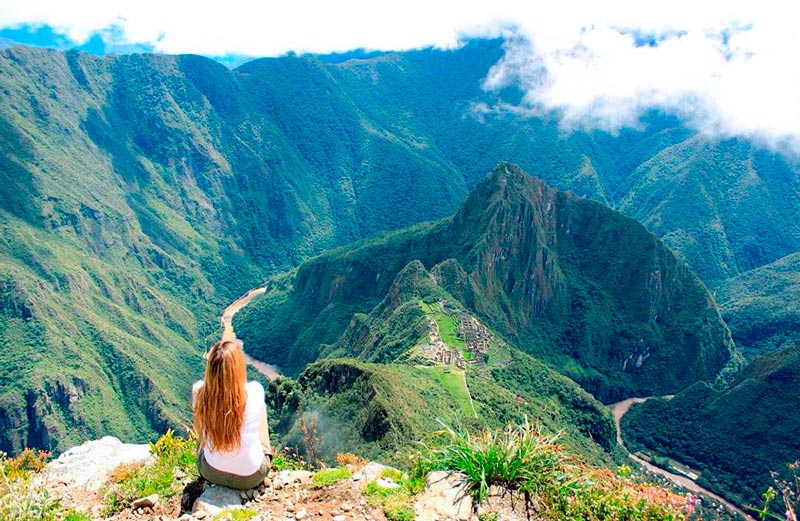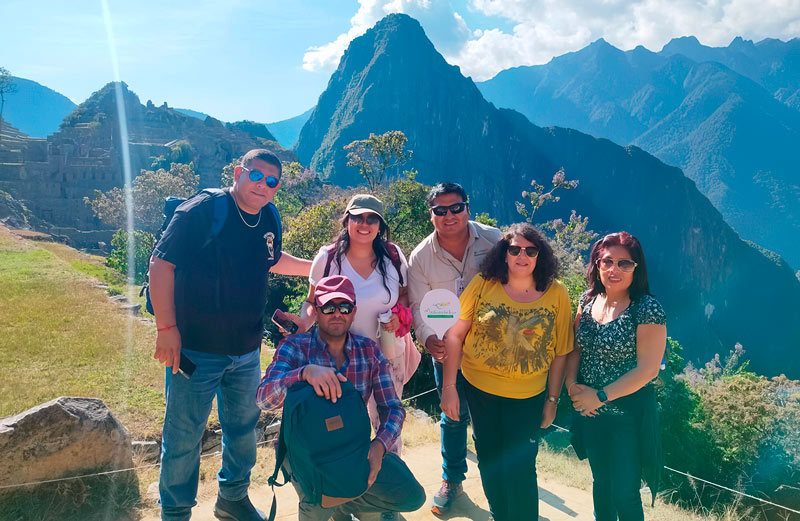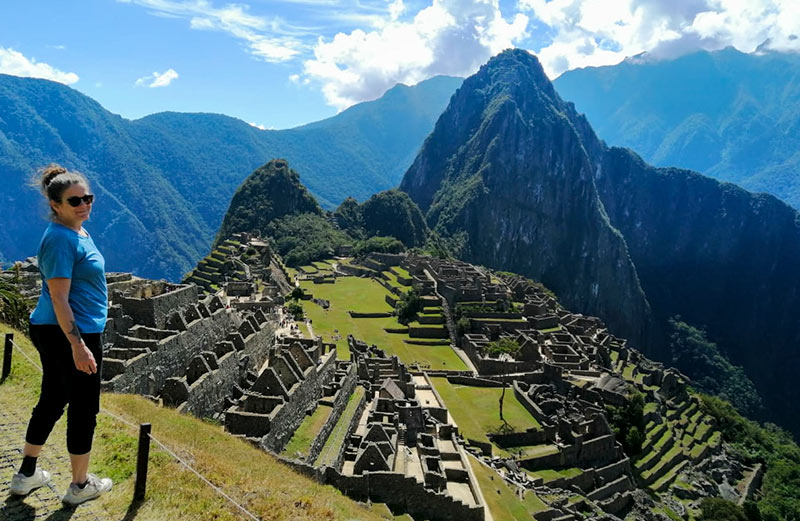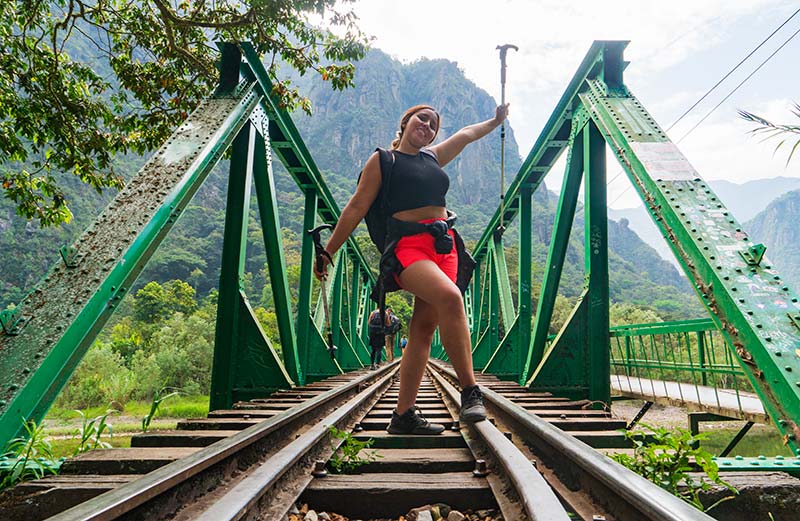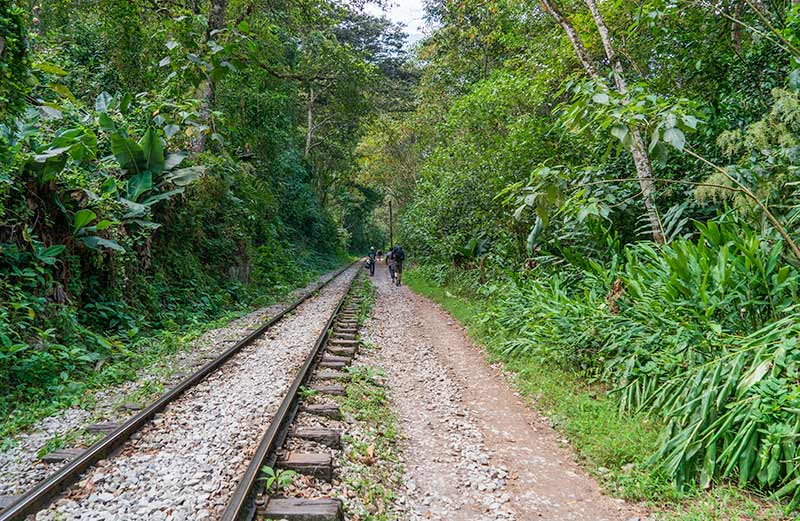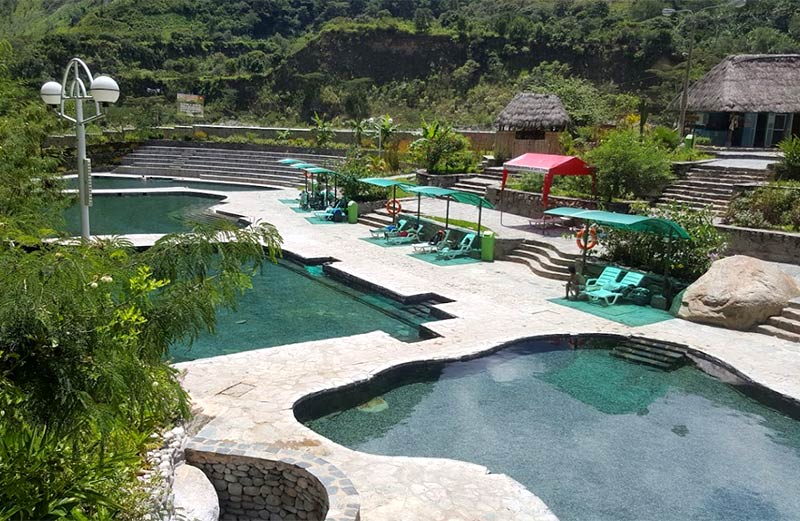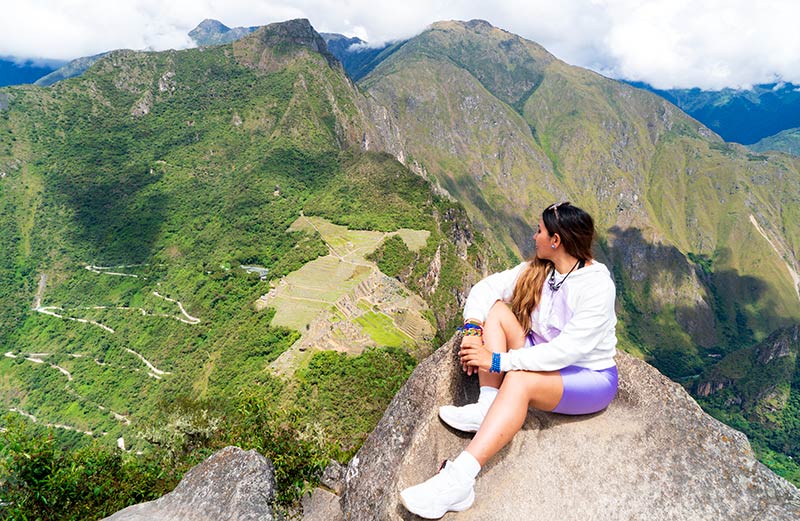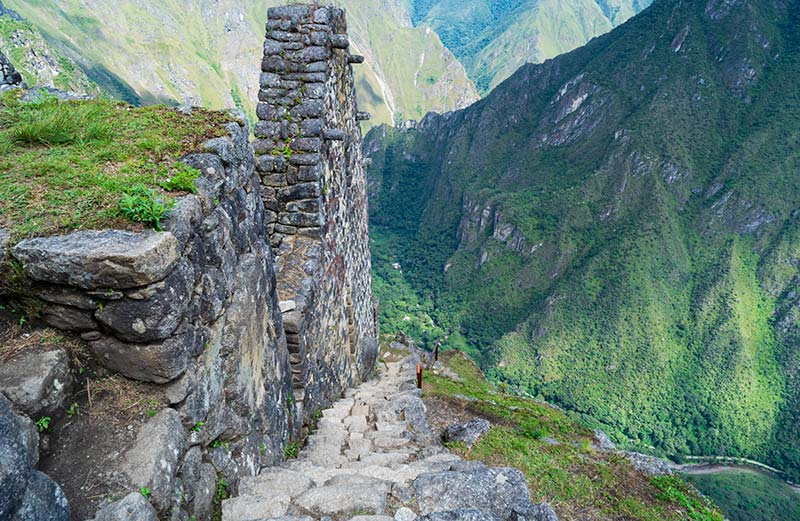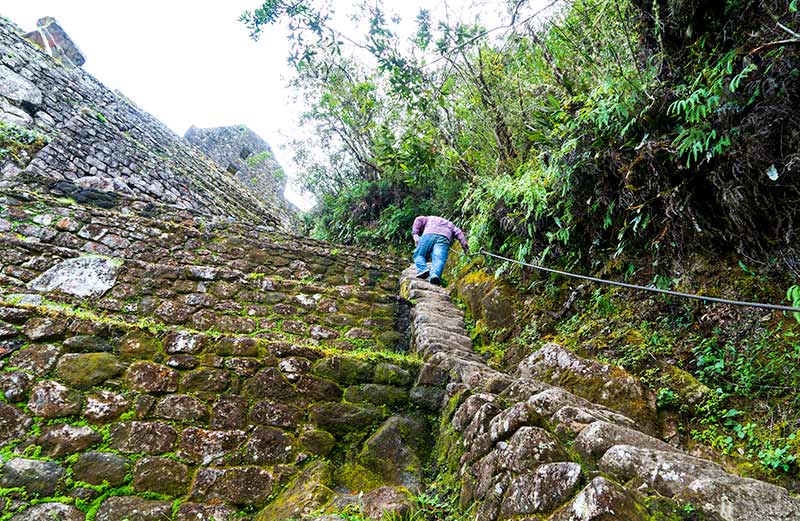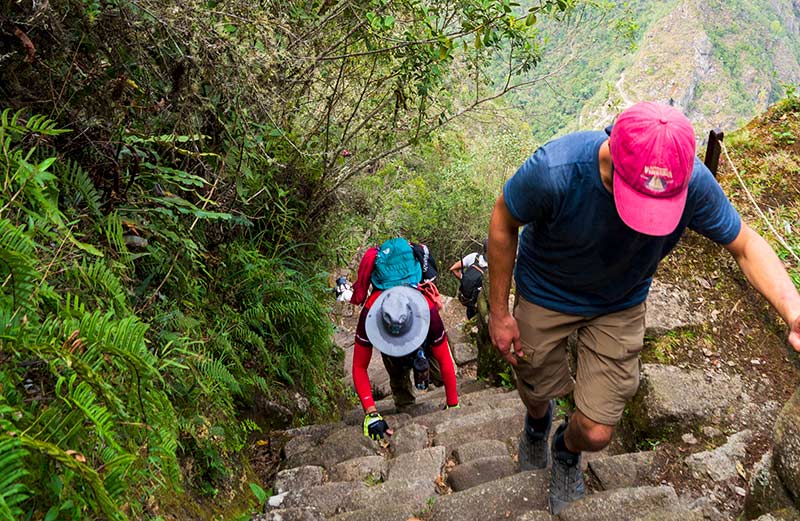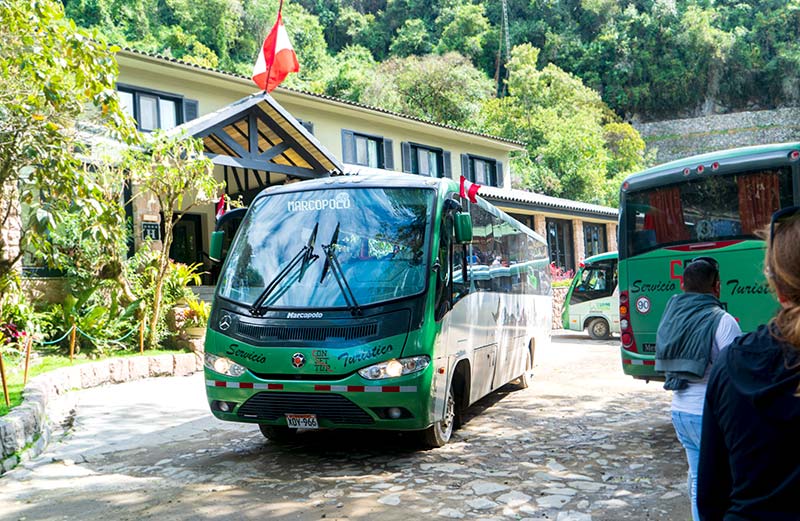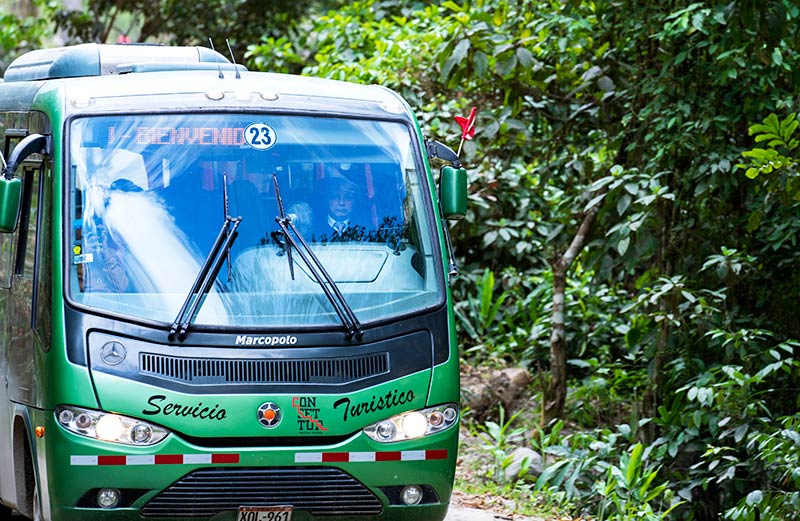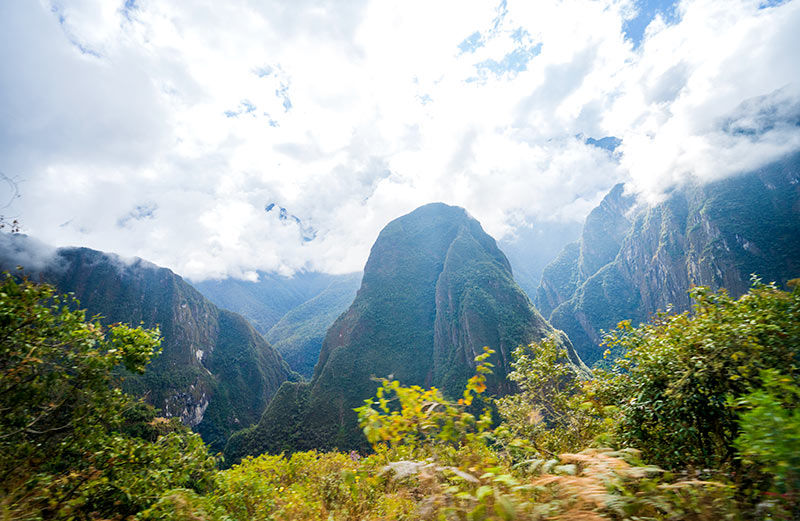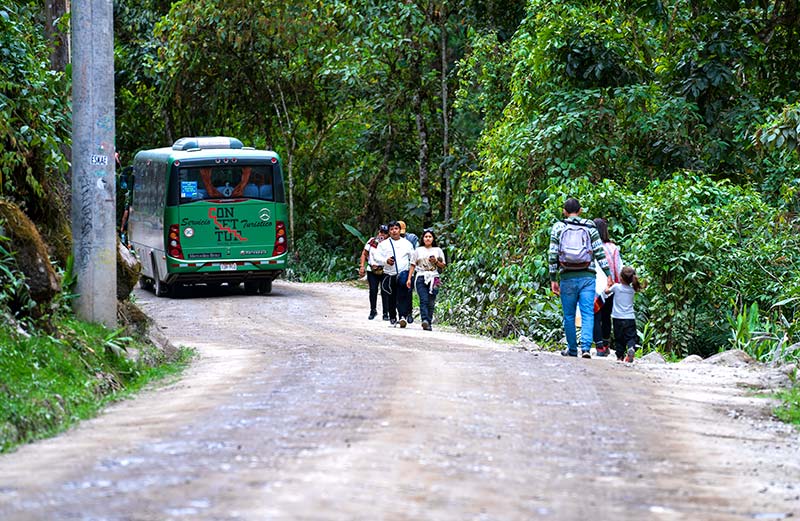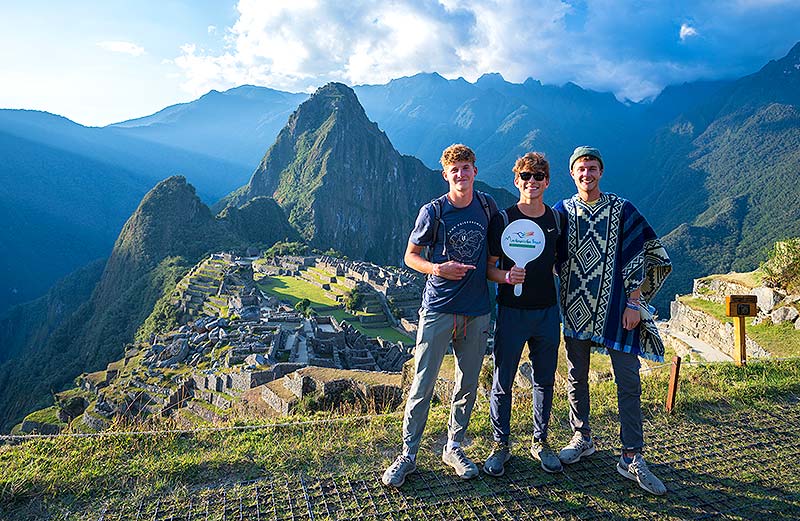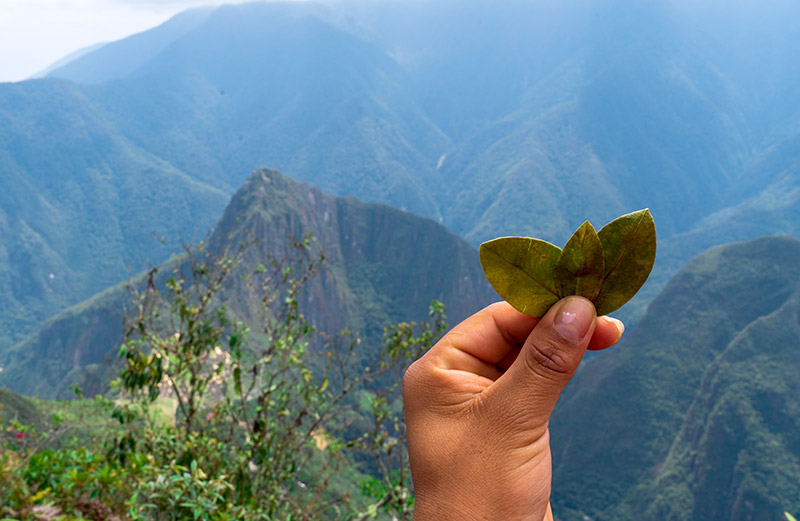Price of the main tours to Machu Picchu
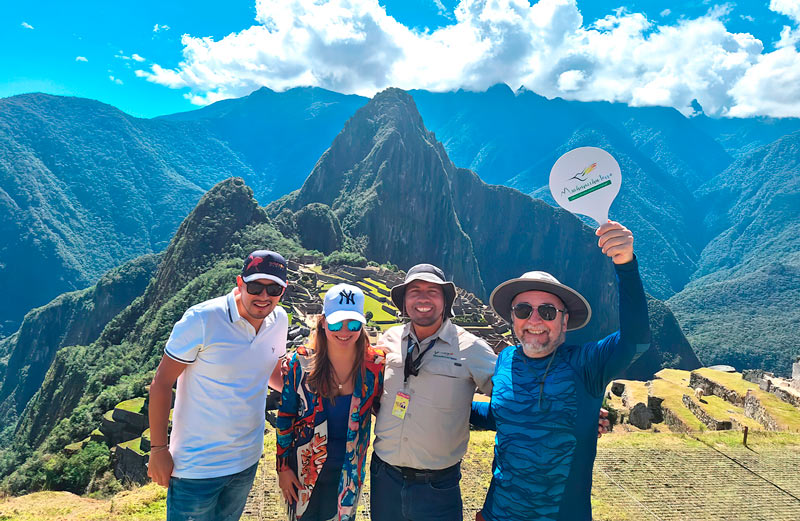
Machu Picchu is a tourist destination that can be visited in many ways. Many visitors prefer to do it through an all-inclusive tour of one or more days. The tours can be diverse according to the type of train, the tour guide service, and even the type of entrance to the Inca citadel. Learn about the prices of the main tours to the Wonder of the World.
Content
- Machu Picchu 1 day tour with a private guide
- Machu Picchu 1 day tour by Expedition Train
- Machu Picchu 1 day tour by The 360 train
- Machu Picchu 1 day tour by The Voyager train
- Machu Picchu 1 day tour by Vistadome train
- Machu Picchu 1 day afternoon tour
- Machu Picchu 2 days tour all included
- Machu Picchu 1 day luxury tour by Hiram Bingham train
- Machu Picchu Economic tour 2 days
- Machu Picchu Special tour by Wheelchair
- Inti Raymi + Machu Picchu 2 days tour with all included
- Machu Picchu + Huayna Picchu 1 day tour
- Machu Picchu + Huchuy Picchu 1 day tour
- Machu Picchu + Mountain 2 days tour all included
- Machu Picchu + Sacred Valley 2 days tour
- Machu Picchu 1 day tour with 5 star buffet
- Machu Picchu Executive tour, Vistadome + buffet
Machu Picchu 1 day tour with a private guide
This tour includes pick up from the hotel in Cusco, full tourist transportation (with Expedition train), Machu Picchu Solo entrance (circuit 2 the most recommended), Consettur bus, and private tour guide service (from the pick up in Cusco city, during the trip, in Machu Picchu and the return to Cusco).
There are discounts for Peruvian, Colombian, Bolivian and Ecuadorian tourists. There are also promotions for visitors under 18 years old and university students (under 25 years old). The tour starts at 5:00 am and ends at 9:00 pm in Cusco. It is an all included service.
Machu Picchu Tour with Private Guide | With Expedition train | With Vistadome train | |
|---|---|---|---|
| Foreign | |||
| Adult | 295 USD | 420 USD | |
| Student | 275 USD | 400 USD | |
| Child | 275 USD | 400 USD | |
| CAN (Perú, Colombia Bolivia, Ecuador) | |||
| Adult | 265 USD | 400 USD | |
| Student | 250 USD | 385 USD | |
| Child | 250 USD | 385 USD | |
Machu Picchu 1 day tour by Expedition Train
This tour includes pick-up from the door of the hotel in Cusco, bus transportation to the train station, a bus ride from Aguas Calientes to Machu Picchu, and a return to Cusco with the same route. The guide is professional and will accompany you during the visit to Machu Picchu.
There are discounts for Peruvian, Colombian, Bolivian, and Ecuadorian tourists. There are also promotions for visitors under 18 years old and university students (under 25 years old). The tour starts at 5:00 am and ends at 9:00 pm in Cusco. It is an all-inclusive service.
Machu Picchu Full Day Tour | With Expedition train | With Vistadome train | |
|---|---|---|---|
| Foreign | |||
| Adult | 257 USD | 317 USD | |
| Student | 238 USD | 298 USD | |
| Child | 220 USD | 280 USD | |
| CAN (Perú, Colombia Bolivia, Ecuador) | |||
| Adult | 228 USD | 288 USD | |
| Student | 209 USD | 269 USD | |
| Child | 205 USD | 265 USD | |
Machu Picchu 1 day tour by The 360 train
This tour includes everything necessary for the visit, such as: pick up from the hotel in Cuzco city, transfers, tourist train ride (360 service), entrance to Machu Picchu, Consettur bus and, optionally for a promotional fee, a buffet lunch at the Tinkuy restaurant (5 star hotel Sanctuary Lodge).
There are discounts for Peruvian, Colombian, Bolivian and Ecuadorian tourists. There are also promotions for visitors under 18 years old and university students (under 25 years old). The tour starts at 5:00 am and ends at 9:00 pm in Cusco. It is an all included service.
Machu Picchu Full Day + INCA RAIL 360 | Price | |
|---|---|---|
| Foreign | ||
| Adult | 340 USD | |
| Student | 315 USD | |
| Child | 310 USD | |
| CAN (Colombia Bolivia, Ecuador) | ||
| Adult | 310 USD | |
| Student | 295 USD | |
| Child | 295 USD | |
| Peruvian | ||
| Adult | 290 USD | |
| Student | 280 USD | |
| Child | 280 USD | |
Machu Picchu 1 day tour by The Voyager train
This tour includes pick up from the visitor’s hotel, transfer to the train station, professional tour guide, entrance to Machu Picchu (circuit 2, the most recommended), Consettur bus, as well as the tourist train ride The Voyager of Inca Rail, a comfortable and safe experience.
There are discounts for Peruvian, Colombian, Bolivian and Ecuadorian tourists. There are also promotions for visitors under 18 years old and university students (under 25 years old). The tour starts at 5:00 am and ends at 9:00 pm in Cusco. It is an all-inclusive service.
Machu Picchu 1 day Tour by The Voyager train | Price | |
|---|---|---|
| Foreign | ||
| Adult | 260 USD | |
| Student | 235 USD | |
| Child | 230 USD | |
| CAN (Colombia Bolivia, Ecuador) | ||
| Adult | 230 USD | |
| Student | 215 USD | |
| Child | 215 USD | |
| Peruvian | ||
| Adult | 215 USD | |
| Student | 200 USD | |
| Child | 200 USD | |
Machu Picchu 1 day tour by Vistadome train
This tour includes pick up from your hotel in Cusco, Bimodal bus ride, a Vistadome tourist train ride, a final bus Consettur, an entrance to Machu Picchu, a qualified professional guide, and a return to your hotel in Cusco.
There are discounts for Peruvian, Colombian, Bolivian and Ecuadorian tourists. There are also promotions for visitors under 18 years old and university students (under 25 years old). The tour starts at 5:00 am and ends at 9:00 pm in Cusco. It is an all included service.
Tour a Machu Picchu Full Day | With Vistadome train | |
|---|---|---|
| Foreign | ||
| Adult | 317 USD | |
| Student | 298 USD | |
| Child | 280 USD | |
| CAN (Perú, Colombia Bolivia, Ecuador) | ||
| Adult | 288 USD | |
| Student | 269 USD | |
| Child | 265 USD | |
Machu Picchu 1 day afternoon tour
This tour includes everything you need for a comfortable and safe trip: pick up from your hotel in Cusco, transfer to the train station, Expedition train ride, Consettur ecological bus ride, Machupicchu Solo entrance fee (circuit 2, the most recommended) and private tour guide.
There are discounts for Peruvian, Colombian, Bolivian and Ecuadorian tourists. There are also promotions for visitors under 18 years old and university students (under 25 years old). The tour starts at 7:00 a.m. and ends at 10:00 p.m. in the city of Cusco. It is an all included service. The visit to Machu Picchu is in the afternoon (approximately 2 pm).
Machu Picchu Afternoon Tour | With Expedition train | With Vistadome train | |
|---|---|---|---|
| Foreign | |||
| Adult | 280 USD | 350 USD | |
| Student | 260 USD | 330 USD | |
| Child | 240 USD | 310 USD | |
| CAN (Perú, Colombia Bolivia, Ecuador) | |||
| Adult | 250 USD | 320 USD | |
| Student | 230 USD | 300 USD | |
| Child | 230 USD | 300 USD | |
Machu Picchu 2 days tour all included
This tour includes pick up from the visitor’s hotel, tourist transportation to the train station, Expedition train ride, 1-night hotel accommodation in Aguas Calientes (comfortable 2-star service), tourist bus to Machu Picchu, professional guide in Machu Picchu, entrance fees and return to Cusco by Expedition train. The tour lasts 2 days, from pick up at 5 am to return to Cusco at 9 pm on the second day.
There are discounts for Peruvian, Colombian, Bolivian and Ecuadorian tourists. There are also promotions for visitors under 18 years old and university students (under 25 years old). The tour starts at 5 am (day 1) and ends at 9 pm (day 2) in the city of Cusco. It is an all included service including the tourist hotel in Aguas Calientes.
Machu Picchu 1 day luxury tour by Hiram Bingham train
This tour includes the trip on the Hiram Bingham train both on the outbound and return leg. In addition, it offers all the necessary services for a comfortable trip: hotel pick up, tourist transfers, complete entrance fees, private professional guide and meals on board the train.
There are discounts for Peruvian, Colombian, Bolivian and Ecuadorian tourists. There are also promotions for visitors under 18 years old and university students (under 25 years old). The tour starts at 7:40 a.m. and ends at 9:45 p.m. in the city of Cusco. It is an all included service with the greatest luxury on board.
Machu Picchu Wheelchair Tours | Tren Expedition | Tren Vistadome | |
|---|---|---|---|
| Foreign | |||
| Adult | 950 USD | 1230 USD | |
| Student | 920 USD | 1200 USD | |
| Child | 915 USD | 1190 USD | |
| CAN (Colombia Bolivia, Ecuador) | |||
| Adult | 925 USD | 1180 USD | |
| Student | 910 USD | 1160 USD | |
| Child | 905 USD | 1150 USD | |
| Peruvian | |||
| Adult | 900 USD | 1150 USD | |
| Student | 890 USD | 1140 USD | |
| Child | 880 USD | 1130 USD | |
Machu Picchu Economic tour 2 days
This tour includes tourist transportation from Cusco to Hidroelectrica (round trip), meals (1 breakfast, 1 lunch, 1 dinner), 1 night in a tourist hotel in Aguas Calientes, a tourist bus, a professional tour guide in Machu Picchu.
There are discounts for Peruvian, Colombian, Bolivian and Ecuadorian tourists. There are also promotions for visitors under 18 years old and university students (under 25 years old). The tour starts at 7 am (day 1) and ends at 8 pm (day 2) in the city of Cusco.
Machu Picchu Economic Tour 2 days | Price |
|---|---|
| Foreign | 147 USD |
| Peruvian | 103 USD |
Machu Picchu Special tour by Wheelchair
This tour includes hotel pick-up, full transportation (transfers, Expedition train and Consettur bus), full-service private guide and assistant guide, as well as buffet lunch at the prestigious restaurant of the 5-star Sanctuary Lodge.
There are discounts for Peruvian, Colombian, Bolivian, and Ecuadorian tourists. There are also promotions for visitors under 18 years old and university students (under 25 years old). The tour starts at 5:00 am and ends at 9:00 pm in the city of Cusco. It is an all-inclusive service (including a lunch buffet in Machu Picchu).
Machu Picchu Wheelchair Tours | Tren Expedition | Tren Vistadome | |
|---|---|---|---|
| Foreigns | |||
| Adult | 950 USD | 1230 USD | |
| Student | 920 USD | 1200 USD | |
| Child | 915 USD | 1190 USD | |
| CAN (Colombia Bolivia, Ecuador) | |||
| Adult | 925 USD | 1180 USD | |
| Student | 910 USD | 1160 USD | |
| Child | 905 USD | 1150 USD | |
| Peruvians | |||
| Adult | 900 USD | 1150 USD | |
| Student | 890 USD | 1140 USD | |
| Child | 880 USD | 1130 USD | |
Inti Raymi + Machu Picchu 2 days tour with all included
This tour includes the Inti Raymi ceremony (June 24), as well as the visit to Machu Picchu on the second day of the visit. For each day the service offers hotel pick-up, full transportation (Expedition train to Machu Picchu), full entrance fees, and a professional tour guide. During the Inti Raymi, the tour also includes a buffet lunch.
There are discounts for Peruvian, Colombian, Bolivian, and Ecuadorian tourists. There are also promotions for visitors under 18 years old and university students (under 25 years old). The tour starts at 7 am (day 1) and ends at 9 pm (day 2) in the city of Cusco. It is an all included service.
Tour Inti Raymi (Sacsayhuaman) + Machu Picchu | Green Zone | Orange Zone (recommended) | Red Zone | |
|---|---|---|---|---|
| Foreign | ||||
| Adult | 450 USD | 530 USD | 530 USD | |
| Student | 430 USD | 510 USD | 510 USD | |
| Child | 410 USD | 490 USD | 490 USD | |
| CAN (Colombia Bolivia, Ecuador) | ||||
| Adult | 420 USD | 500 USD | 500 USD | |
| Student | 400 USD | 480 USD | 480 USD | |
| Child | 390 USD | 470 USD | 470 USD | |
| Peruvians | ||||
| Adult | 340 USD | 500 USD | 500 USD | |
| Student | 320 USD | 480 USD | 480 USD | |
| Child | 310 USD | 470 USD | 470 USD | |
Machu Picchu + Huayna Picchu 1 day tour
This tour includes pick up from the door of the visitor’s hotel in Cusco, tourist transportation by minivan, Expedition tourist train, professional tour guide on the mountain, entrance fee ‘Machupicchu + Huaynapicchu’, as well as buffet lunch option at the 5-star restaurant Tinkuy.
There are discounts for Peruvian, Colombian, Bolivian, and Ecuadorian tourists. There are also promotions for visitors under 18 years old and university students (under 25 years old). The tour starts at 5:00 am and ends at 9:00 pm in Cusco. It is an all-inclusive service.
Machu Picchu + Huayna Picchu Tour | With Expedition train | With Vistadome train | |
|---|---|---|---|
| Foreign | |||
| Adult | 330 USD | 410 USD | |
| Student | 310 USD | 390 USD | |
| Child | 300 USD | 380 USD | |
| CAN (Perú, Colombia Bolivia, Ecuador) | |||
| Adult | 305 USD | 385 USD | |
| Student | 295 USD | 375 USD | |
| Child | 285 USD | 365 USD | |
Machu Picchu + Huchuy Picchu 1 day tour
This tour includes pick-up from the door of the hotel in Cusco, tourist transportation in a minivan, Peru Rail Expedition tourist train, a professional tour guide in Machu Picchu (circuit 4), entrance ‘Machupicchu + Huchuy Picchu’, and more. The service starts with the pick up of the visitor in Cusco at 5 am and ends also in Cusco at 9 pm.
There are discounts for Peruvian, Colombian, Bolivian, and Ecuadorian tourists. There are also promotions for visitors under 18 years old and university students (under 25 years old). The tour starts at 5:00 am and ends at 9:00 pm in Cusco. It is an all-inclusive service.
Machu Picchu + Huchuy Picchu Tour | With Expedition train | With Vistadome train | |
|---|---|---|---|
| Foreign | |||
| Adult | 300 USD | 380 USD | |
| Student | 275 USD | 355 USD | |
| Child | 265 USD | 345 USD | |
| CAN (Perú, Colombia Bolivia, Ecuador) | |||
| Adult | 270 USD | 350 USD | |
| Student | 255 USD | 335 USD | |
| Child | 255 USD | 335 USD | |
Machu Picchu + Mountain 2 days tour all included
This tour includes a visit to Machu Picchu by the classic route (circuit 2). On the second day of the tour, after a night at the hotel in Aguas Calientes, you will make the arduous trek to the top of Machu Picchu mountain. The service includes pick-up, full transportation (Expedition train), a professional guide, entrance fees, and 1 night of hotel accommodation in Aguas Calientes.
There are discounts for Peruvian, Colombian, Bolivian, and Ecuadorian tourists. There are also promotions for visitors under 18 years old and university students (under 25 years old). The tour starts at 5 am (day 1) and ends at 9 pm (day 2) in the city of Cusco. It is an all-inclusive service.
Machu Picchu + Sacred Valley 2 days tour
This tour includes a visit to the most important tourist attractions of Cusco, such as Pisac, Ollantaytambo, and Machu Picchu. It also offers a buffet lunch at Tunupa restaurant, one of the best in Cusco. All other services are included: pick up, transportation, guide, entrance fees, buffet, hotel, and more.
There are discounts for Peruvian, Colombian, Bolivian, and Ecuadorian tourists. There are also promotions for visitors under 18 years old and university students (under 25 years old). The tour starts at 7:00 a.m. (day 1) and ends at 9:00 p.m. (day 2) in the city of Cusco. It is an all included service.
Machu Picchu + Sacred Valley Tour | 2-star Hotel | 3-star Hotel | 4-star Hotel | |
|---|---|---|---|---|
| Foreign | ||||
| Adult | 375 USD | 415 USD | 605 USD | |
| Student | 350 USD | 390 USD | 580 USD | |
| Child | 350 USD | 390 USD | 580 USD | |
| CAN (Colombia Bolivia, Ecuador) | ||||
| Adult | 345 USD | 385 USD | 575 USD | |
| Student | 335 USD | 375 USD | 565 USD | |
| Child | 335 USD | 375 USD | 565 USD | |
| Peruvians | ||||
| Adult | 325 USD | 365 USD | 555 USD | |
| Student | 315 USD | 355 USD | 545 USD | |
| Child | 315 USD | 355 USD | 545 USD | |
Machu Picchu 1 day tour with 5 star buffet
This tour includes a buffet lunch at the prestigious Tinkuy restaurant, at the 5-star hotel Sanctuary Lodge (the only one located next to the archaeological site of Machupicchu). The tour also includes pick-up from the hotel in Cusco City, transfers, a professional tour guide, and a Machupicchu Solo entrance fee (circuit 2 with classic photo).
There are discounts for Peruvian, Colombian, Bolivian, and Ecuadorian tourists. There are also promotions for visitors under 18 years old and university students (under 25 years old). The tour starts at 5:00 am and ends at 9:00 pm in the city of Cusco. It is an all-inclusive service, including a lunch buffet in one of the best restaurants in Cusco.
Machu Picchu Executive tour, Vistadome + buffet
This tour includes pick-up from the hotel in Cusco, tourist transportation, a professional guide, and entrance to Machu Picchu. The visitor will enjoy a well-organized service from start to finish. The tour starts with the pick-up in Cusco at 5:00 am and ends at 9:00 pm also in the city of Cusco.
There are discounts for Peruvian, Colombian, Bolivian, and Ecuadorian tourists. There are also promotions for visitors under 18 years old and university students (under 25 years old). The tour starts at 5:00 a.m. and ends at 9:00 p.m. in the city of Cusco. It is an all-inclusive service with Vistadome train services and buffet lunch in the only 5-star hotel next to Machu Picchu.
